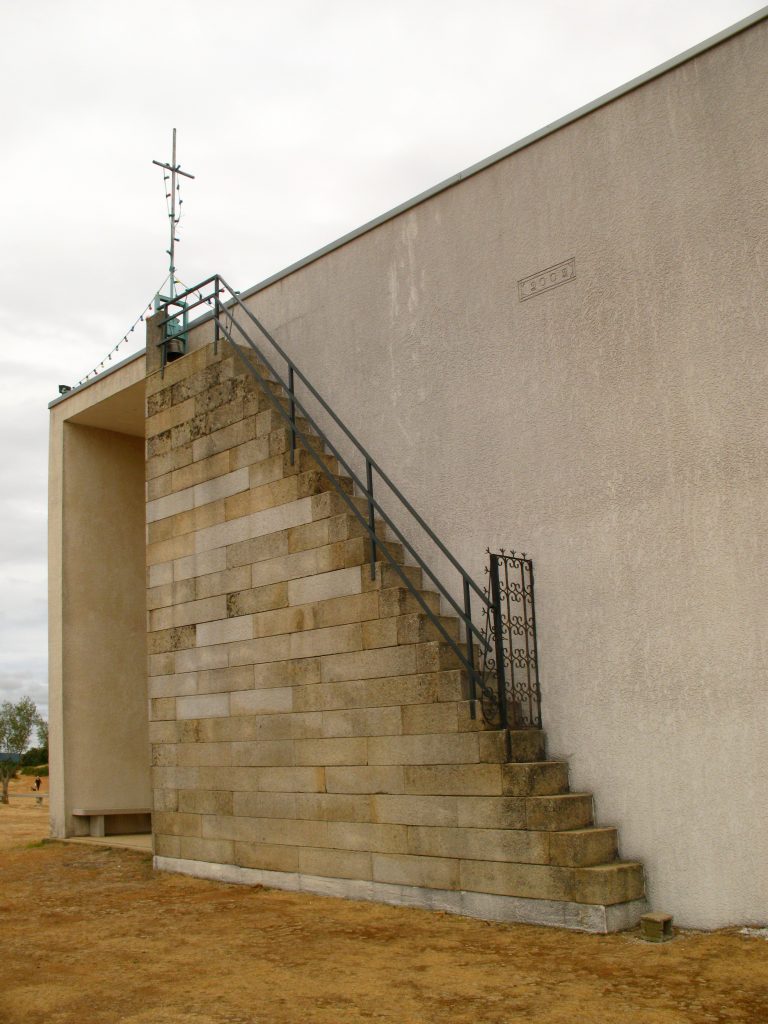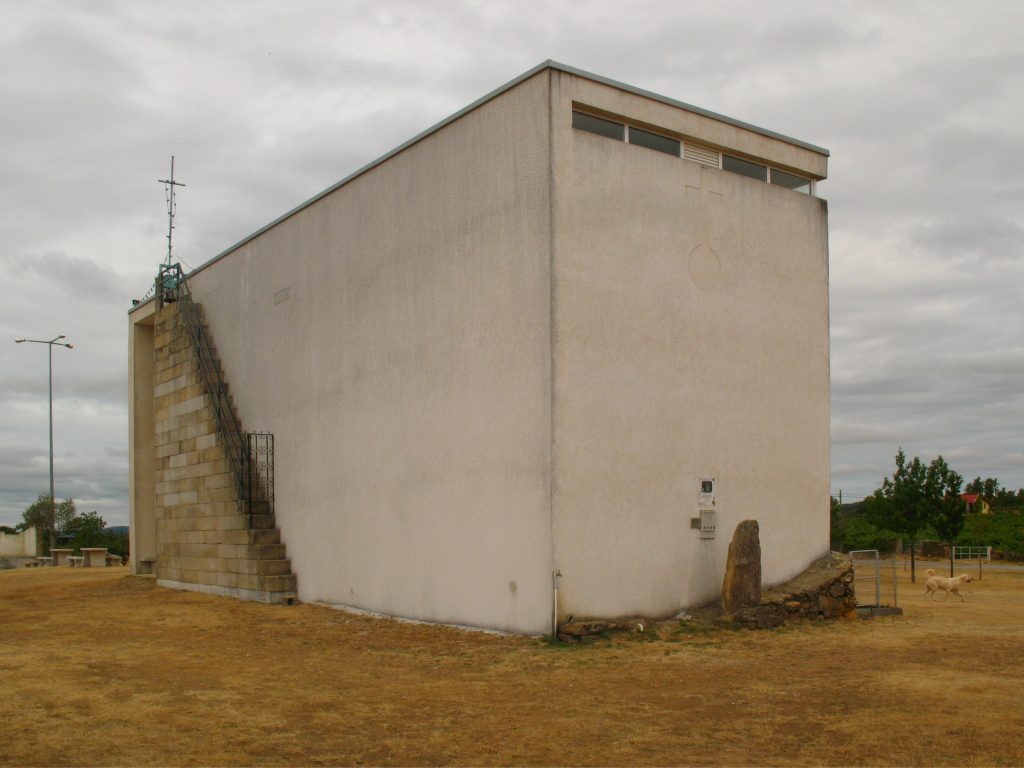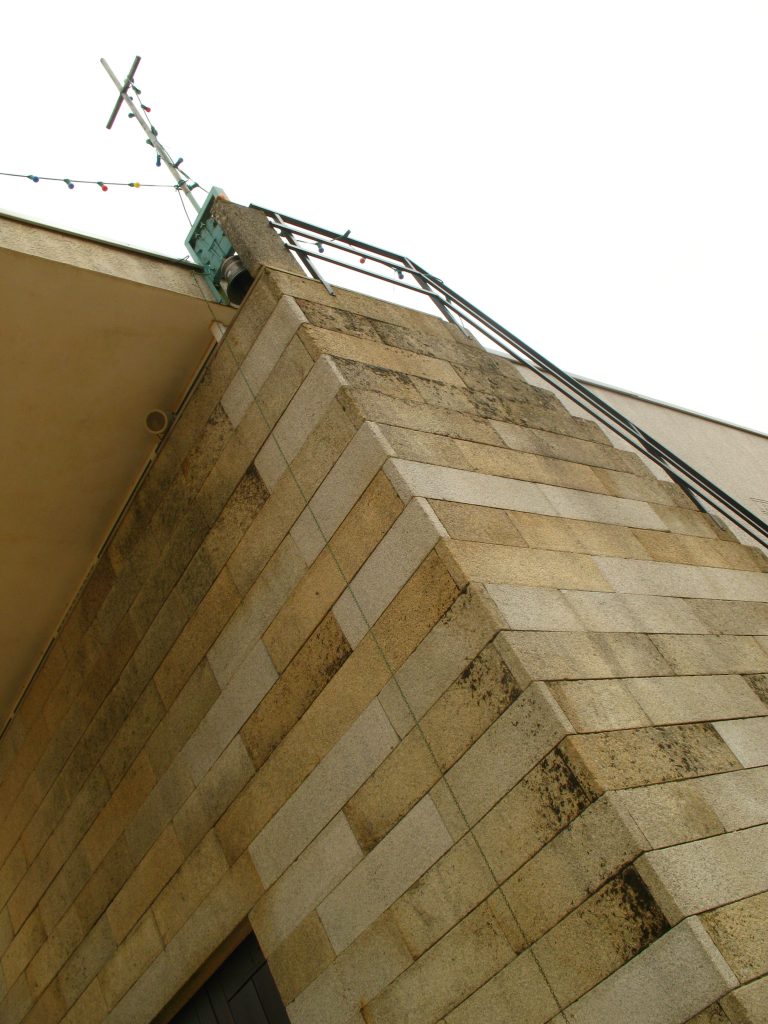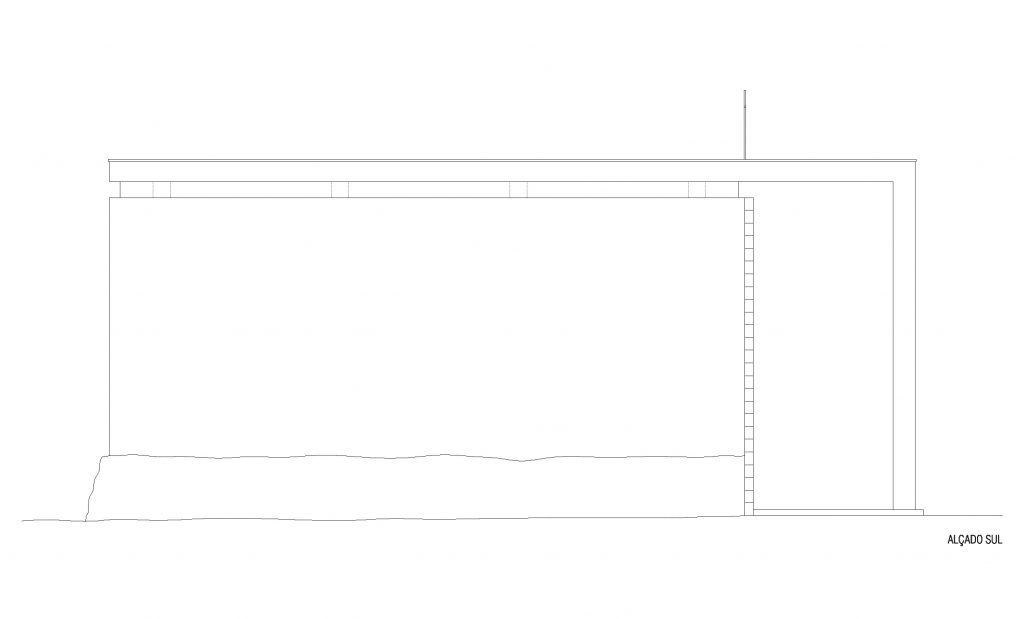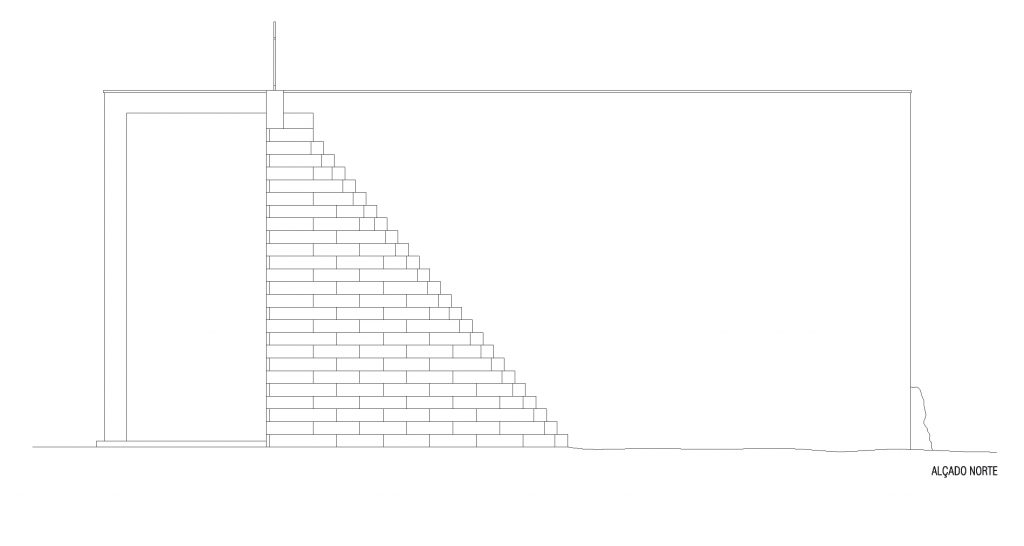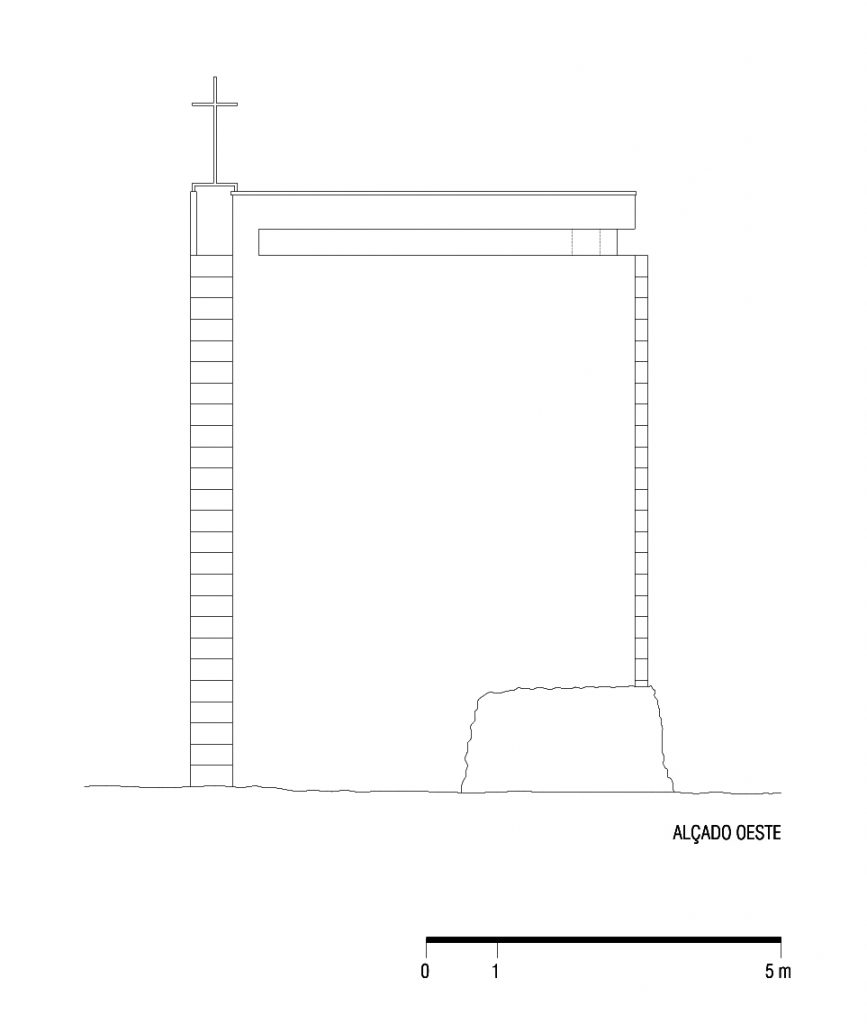This article is part of the Hidden Architecture Series “Tentative d’Épuisement”, where we explore the practice of an architectural criticism without rhetoric and based mainly on the physical experience of the work itself.
Este artículo forma parte de la serie “Tentativa de Agotamiento”, comisariada por Hidden Architecture, donde exploramos la práctica de una crítica arquitectónica ausente de retórica y fundamentada sobre todo en la experiencia física de la propia obra.
***
“The remains of the old, almost completely ruined chapel provided the bases for the planimetric layout. The height was the consequence of the observation of dimensional relationships of some single nave Romanic chapels situated throughout the north of the country. The new building is laid out as a pure volume in which episodes that express the content of the construction occur. In terms of typology, the chapel re-uses some traditional architectural elements with special emphasis on the entrance porch and stairs leading to the belfry. The tear which separates the walls from the roofing on two sides of the building provides light for the interior and frees the walls from their structural function in order to accentuate the remains of the old wall set into the new plastered plane. The inscription set in a granite plaque breaks the monumental symmetry of the entrance, providing another fragment – a testament of the chapel’s history. Granite, wood and white plaster are the finishes used and it was these materials in particular that helped overcome the initial distrust of the “new building”.”
“Los restos de la antigua capilla, casi completamente arruinada, proporcionaron las bases para la disposición planimétrica. La altura fue consecuencia de la observación de las relaciones dimensionales de algunas capillas románicas de una sola nave situadas en todo el norte del país. El nuevo edificio se presenta como un volumen puro en el que se producen episodios que expresan el contenido de la construcción. En cuanto a la tipología, la capilla reutiliza algunos elementos arquitectónicos tradicionales, con especial énfasis en el porche de entrada y las escaleras que conducen al campanario. El desgarro que separa los muros de la cubierta en dos lados del edificio proporciona luz al interior y libera a los muros de su función estructural para acentuar los restos del antiguo muro encajado en el nuevo plano enlucido. La inscripción colocada en una placa de granito rompe la simetría monumental de la entrada, proporcionando otro fragmento – un testamento de la historia de la capilla. El granito, la madera y el yeso blanco son los acabados utilizados y fueron estos materiales en particular los que ayudaron a superar la desconfianza inicial del “nuevo edificio”.”
Text by Cannatà e Fernandes
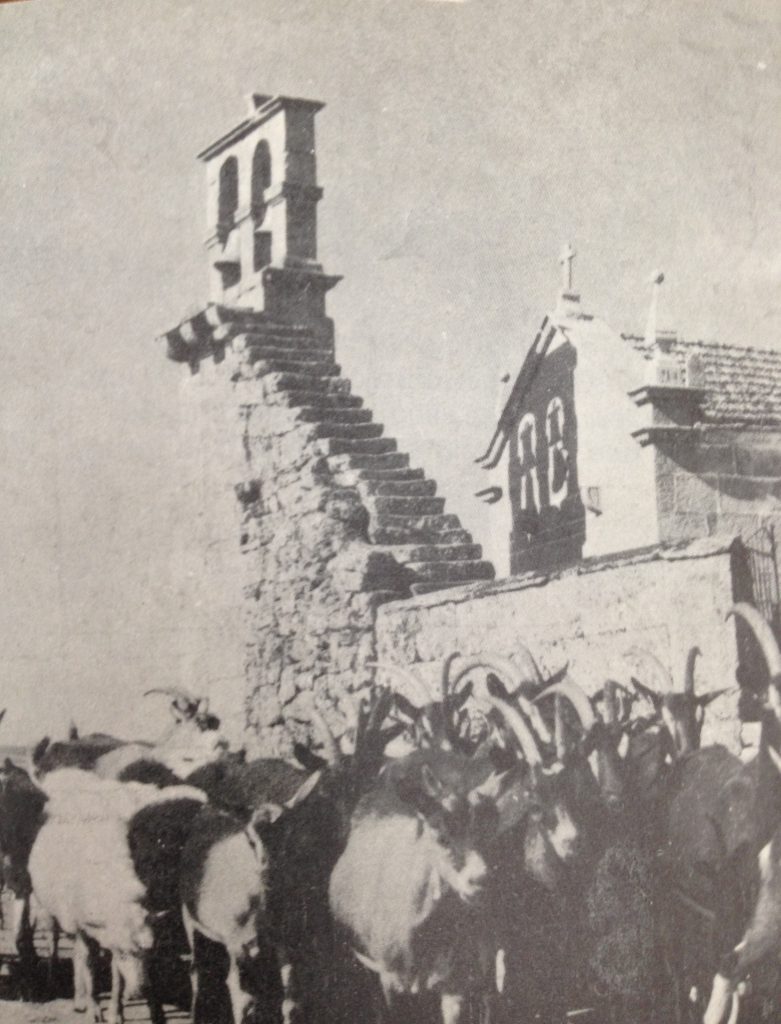

The sky here is so clear and pure that staying awake the longest night of the year would not be enough to count all the celestial bodies tinkling in it. The cold pushes you in a hurry. You didn’t want to take a jacket before going out and, now, that useless garment, hanging from a forgotten chair, puts a premature end to this delightful evening stroll. Tight, a little shrunken and dry. Yes, dry. It’s been weeks, I’ve lost count, since I last found my skin like this. In Madrid the heat had become that unbearable companion, always impertinent, that one viscerally despises. Feeling a little cold, even for a short period of time, makes you regain consciousness about your body. A stream, a young poplar grove, an old water mill and stones, big, enormous, vast stones; stones arranged in different walls that, in collaboration with this recently restored roof, protect us from the observant scrutiny of the sky. A faint moonbeam timidly passes through the small skylight next to the door, caressing with its dying agony the left sleeve of the previously longed-for jacket.
Tomorrow I want to get up early. It might rain on the way.
El cielo aquí es tan limpio y puro que permanecer despierto la noche más larga del año no bastaría para contar todos los cuerpos celestes que tintinean en él. El frío te empuja con prisa. No quisiste coger una chaqueta antes de salir y, ahora, esa prenda inútil, colgada del olvido de una silla, pone fin prematuramente a este delicioso paseo nocturno. Tersa, algo encogida y seca. Sí, seca. Hace semanas, ya perdí la cuenta, que no encontraba mi piel así. En Madrid el calor se había convertido en ese compañero insoportable, siempre impertinente, al que uno desprecia visceralmente. Sentir algo de frío, aun por un breve periodo de tiempo, te hace recuperar la conciencia sobre el cuerpo. Un arroyo, una joven alameda, un viejo molino de agua y piedras, piedras grandes, enormes, vastísimas; piedras dispuestas en diferentes muros que, en colaboración con este tejado recién restaurado, nos protege del escrutinio observador del cielo. Un tenue rayo de luna atraviesa tímidamente la pequeña claraboya junto a la puerta, acariciando con su mortecina agonía la manga izquierda de la chaqueta antes añorada.
Mañana quiero levantarme temprano. Podría llover de camino.
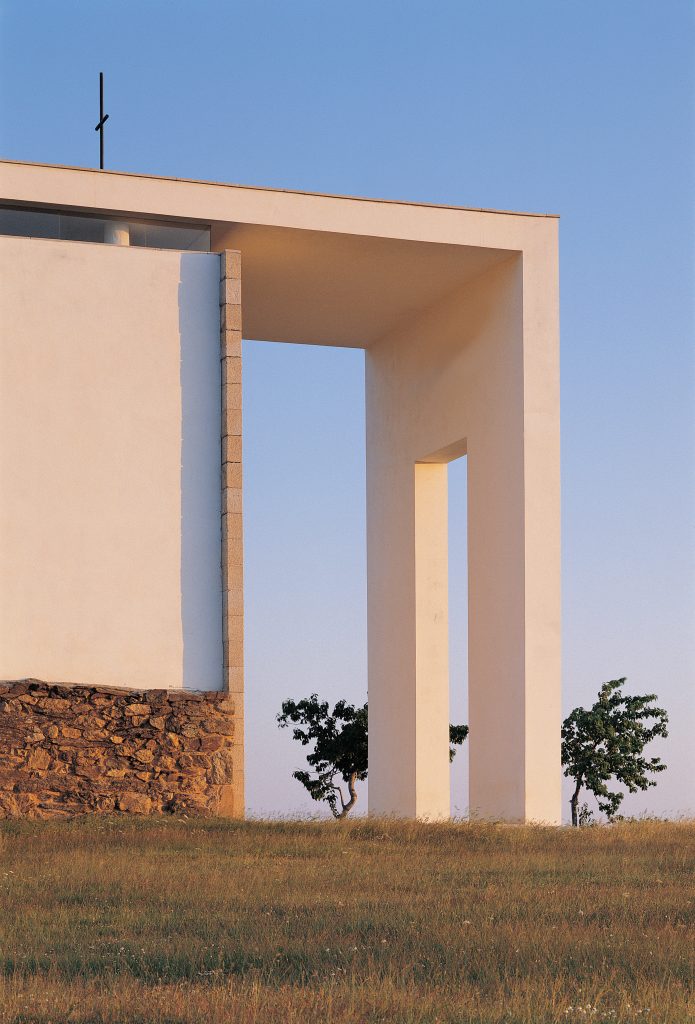
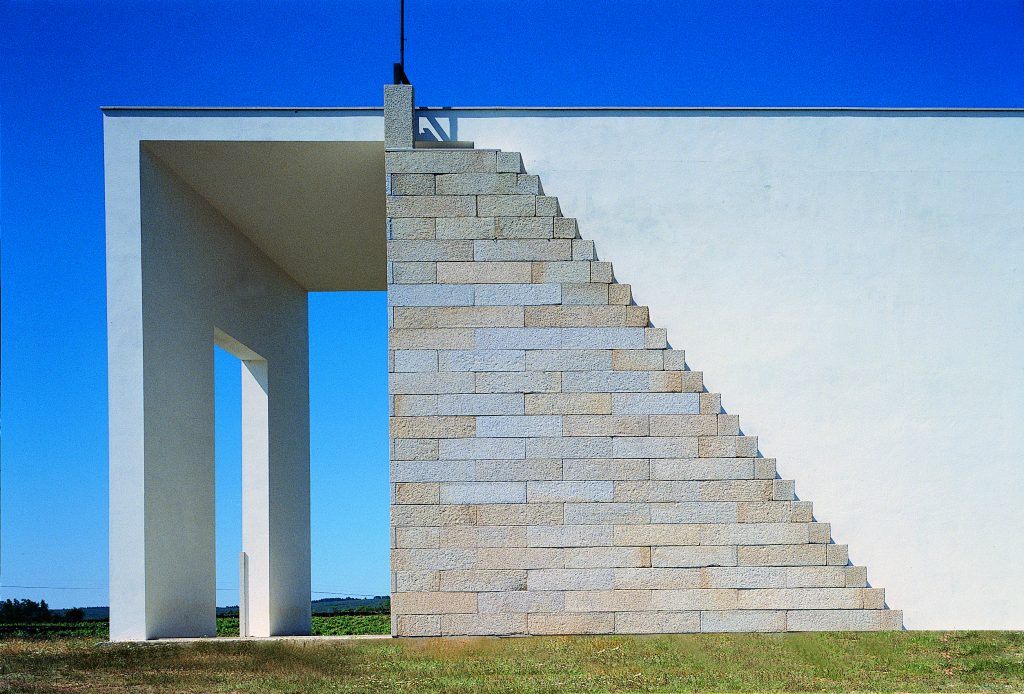
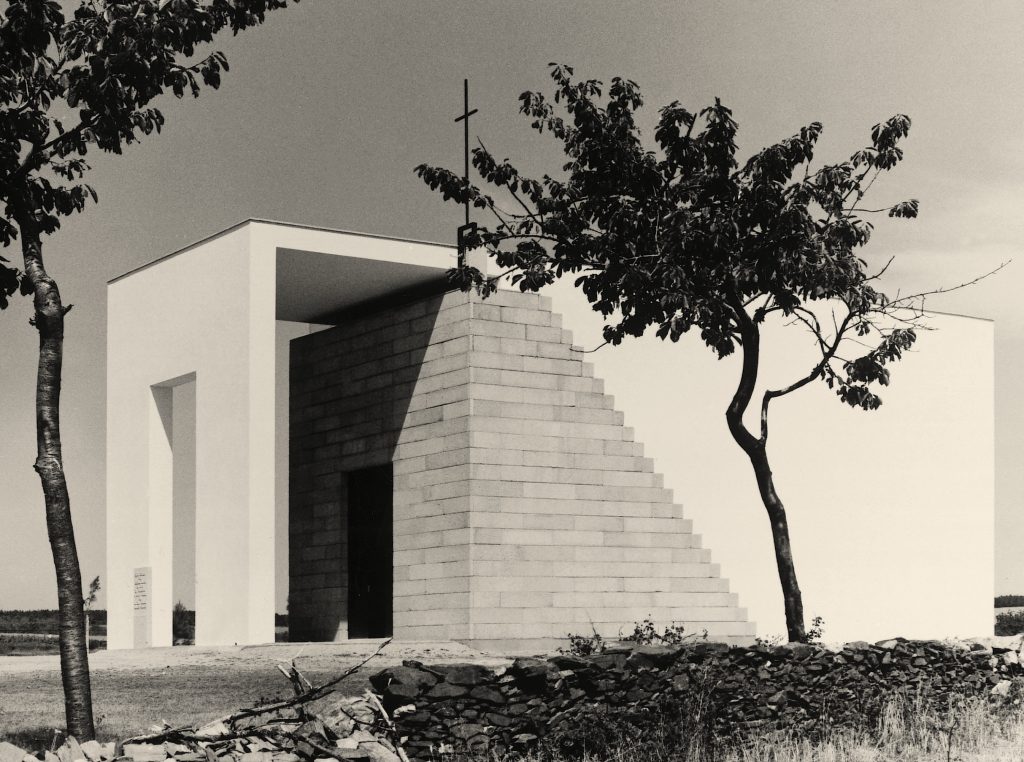
“Architects are nowadays pathologically addicted to change, regarded as something one either hinders, runs after or at best keeps up with. This, I suggest, is why they tend to sever the past from the future, with the result that the present is rendered emotionally inaccesible, without temporal dimensión. I dislike a sentimental antiquarium attitude towards the past as much as I dislike a sentimental technocratic one towards the future. Both are founded on a static, clockwork notion of time (what antiquarians and technocrats have in common), so let´s start with the past for a change and discover the unchanging condition of man.”
“Los arquitectos son hoy en día patológicamente adictos al cambio, considerado como algo que uno obstaculiza, persigue o, en el mejor de los casos, mantiene. Esto, sugiero, es por lo que tienden a separar el pasado del futuro, con el resultado de que el presente se hace emocionalmente inaccesible, sin dimensión temporal. Me disgusta una actitud sentimental de anticuario hacia el pasado tanto como una sentimental tecnocrática hacia el futuro. Ambas se basan en una noción estática y mecánica del tiempo (lo que los anticuarios y los tecnócratas tienen en común), así que empecemos por el pasado para cambiar y descubrir la condición inmutable del hombre”.
Text by Aldo van Eyck
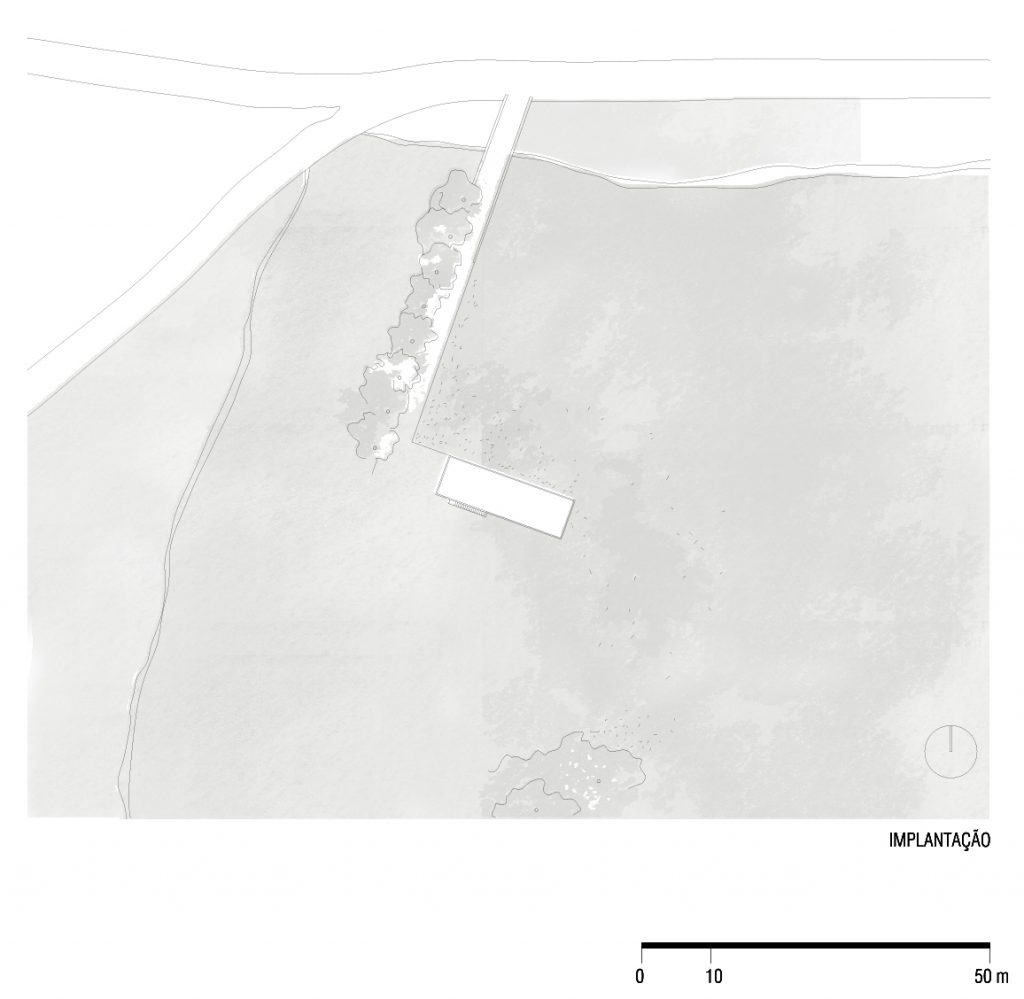
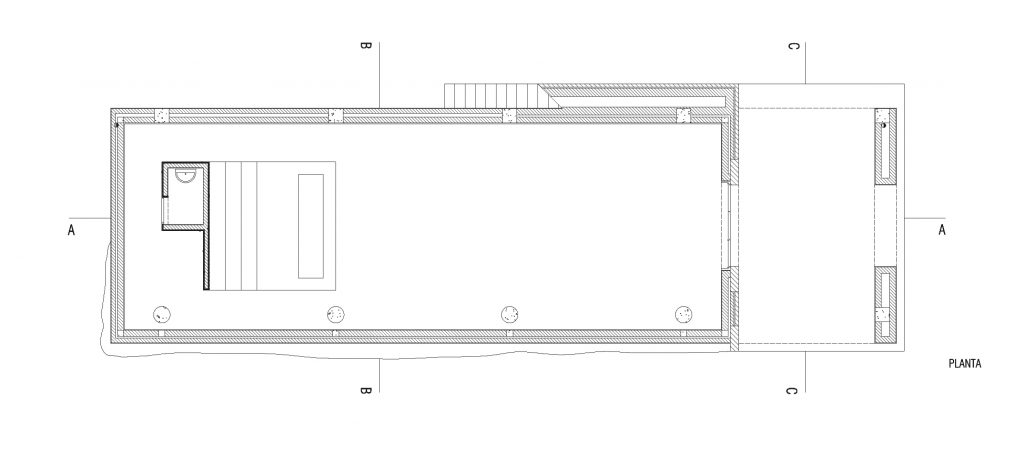
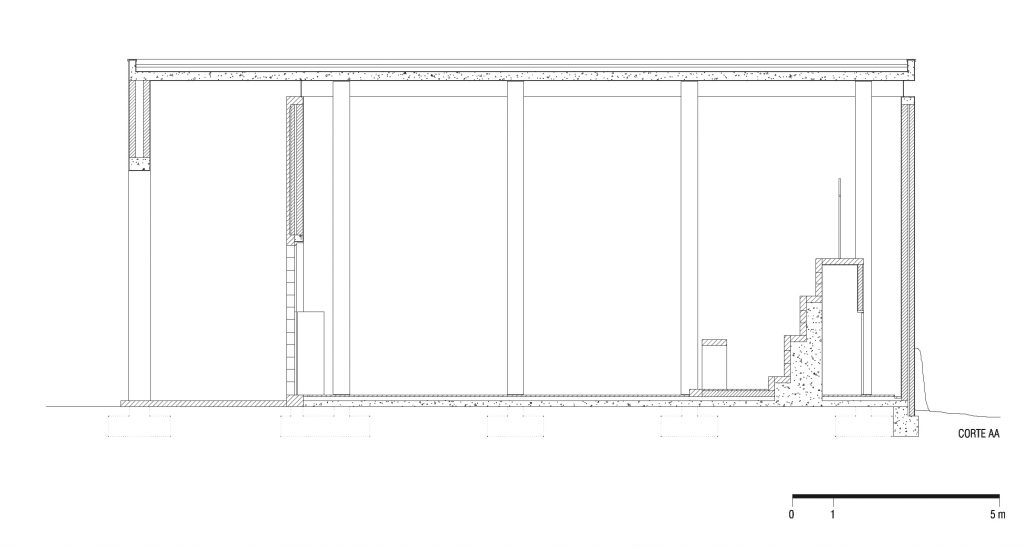
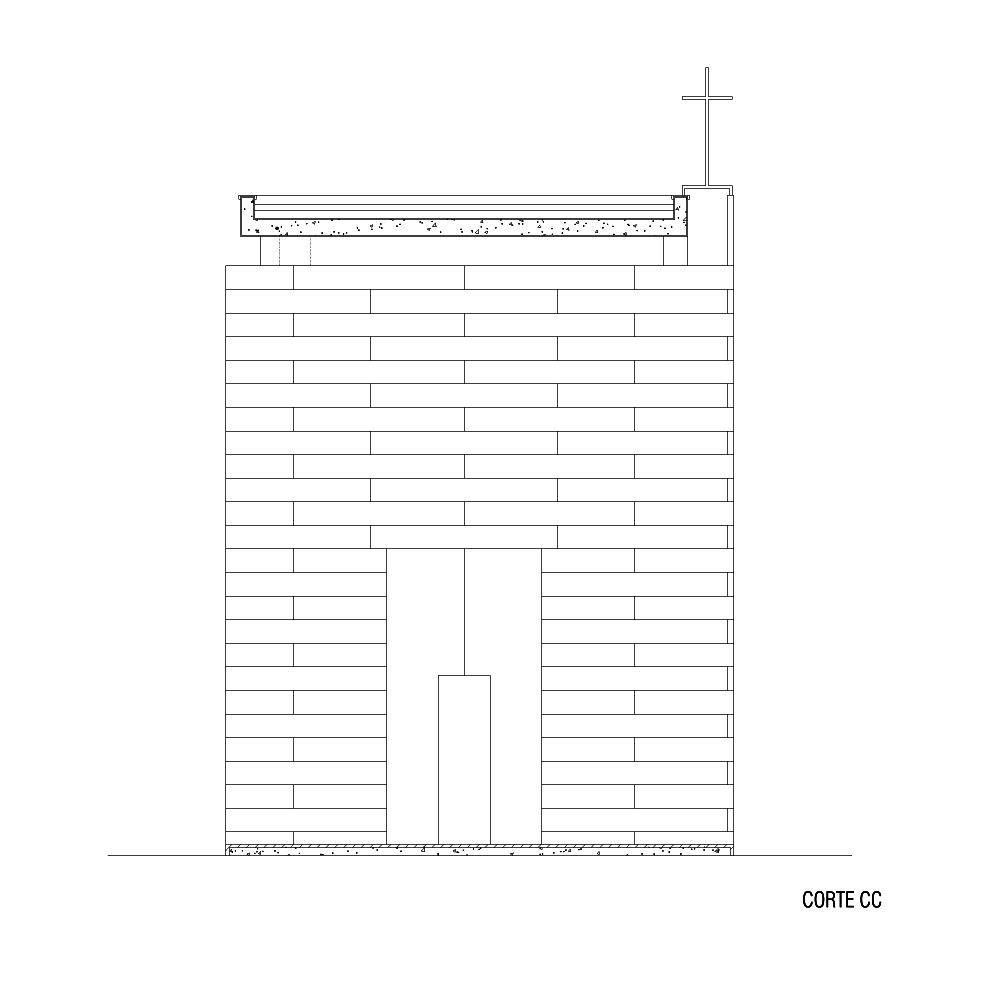
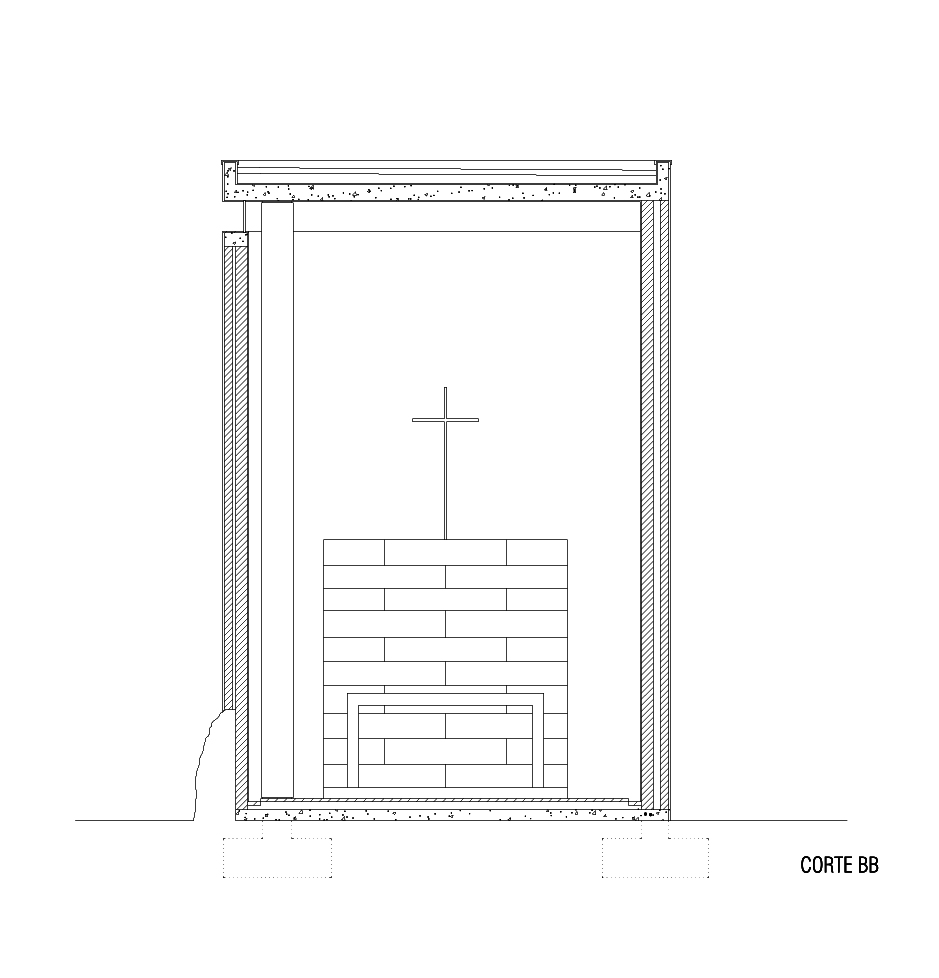
It is the third time. The dust that the wind stirred up in the distance becomes, a few metres away, a new flock of sheep led by an old shepherd. Dogs bark at us as we pass. We stop the engine and watch from our seats as the last stragglers cross the road. The road clear, we delay starting the engine until the last chords, soaring raspy, exhaust the song. A few drops of water have fallen on the windscreen, drawing circles on the dust.
Es la tercera vez. La polvareda que el viento agitaba a lo lejos se convierte, a escasos metros, en un nuevo rebaño de ovejas guiadas por un anciano pastor. Los perros nos ladran al pasar. Detenemos el motor y observamos desde nuestros asientos cómo los últimos animales rezagados atraviesan la carretera. Camino despejado, demoramos la puesta en marcha hasta que los últimos acordes, elevándose rasgados, agotan la canción. Alguna gota de agua ha caído en el parabrisas dibujando círculos sobre el polvo depositado.
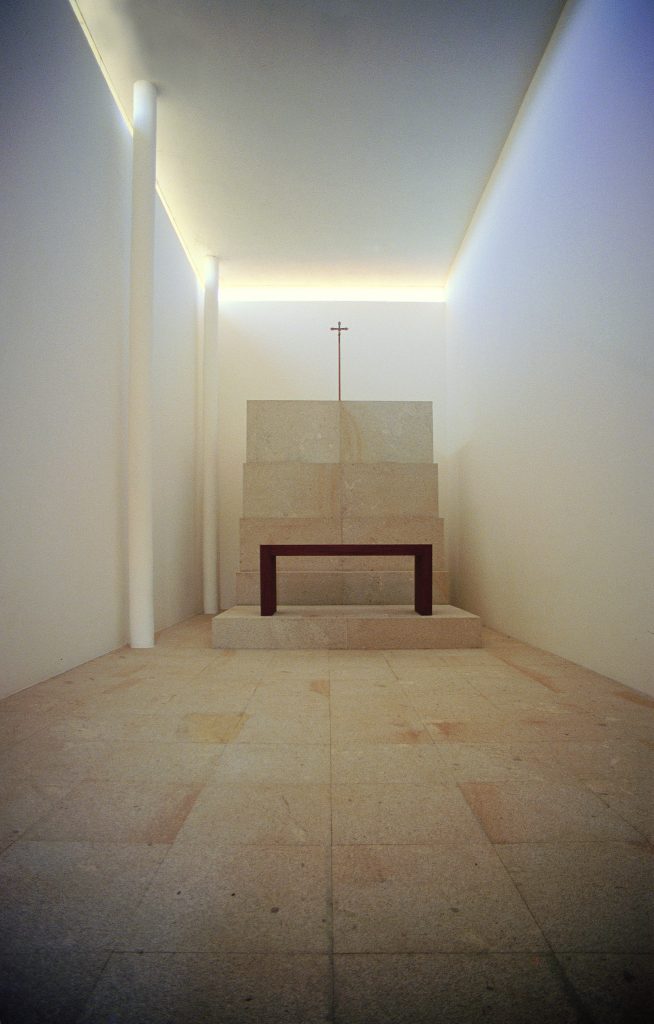
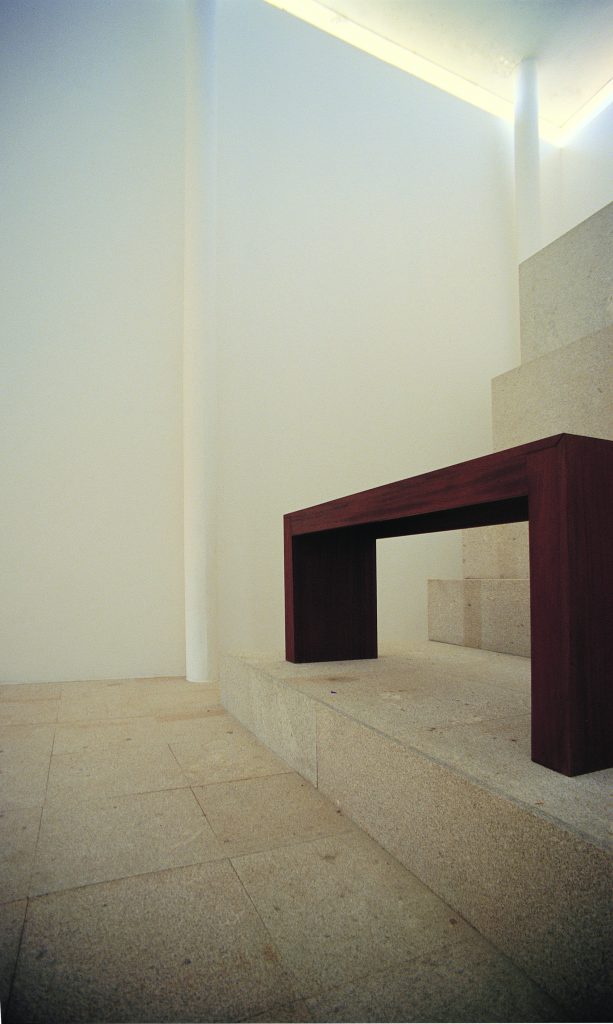
Cork oaks and holm oaks cover the maternally soft hills like a sheet. Fragments of granite are scattered here and there, as if plucked up by a rebellious air, quickly extinguished. The human settlements are generally made up of a few isolated buildings grouped around a small square, a place which is also often the point where the path we are following comes to an end. The flock of sheep is just a scattered dusty cloud in the rear-view mirror, advancing slowly but surely in the opposite direction to the stone walls, a population that can be seen in front of us, which shelter them every night. Descending the sweetness of these hills is a pleasant tingling sensation in the belly. These little shivers, similar to those that the cold caused on the skin yesterday, have been eradicated from places like Madrid. If they were human nature, or rather animal nature, we could conclude that the mechanisation of the cities has been an undoubted success.
Alcornoques y encinas cubren como una sábana las colinas maternalmente suaves. Fragmentos de granito se desprenden por aquí o por allá, como arrancados por un aire rebelde, rápidamente extinguido. Los asentamientos humanos se componen, por lo general, de unas pocas edificaciones aisladas agrupadas en torno a una pequeña plaza, lugar que además suele constituir un vértice del trazado del camino que nosotros seguimos. El rebaño de ovejas es apenas una nube polvorienta dispersa ya en el espejo retrovisor, avanzando lenta pero decididamente en sentido contrario a los muros de piedra, población que se adivina frente a nosotros, que les sirven de cobijo cada noche. Descender la dulzura de estas colinas provoca un agradable cosquilleo en el vientre. Estos pequeños estremecimientos, similares a los que el frío provocaba ayer sobre la piel, han sido erradicados de lugares como Madrid. Si en ellos residiera la naturaleza humana, o mejor dicho, la naturaleza animal, podríamos concluir que la mecanización de las ciudades ha alcanzado un éxito sin fisuras.
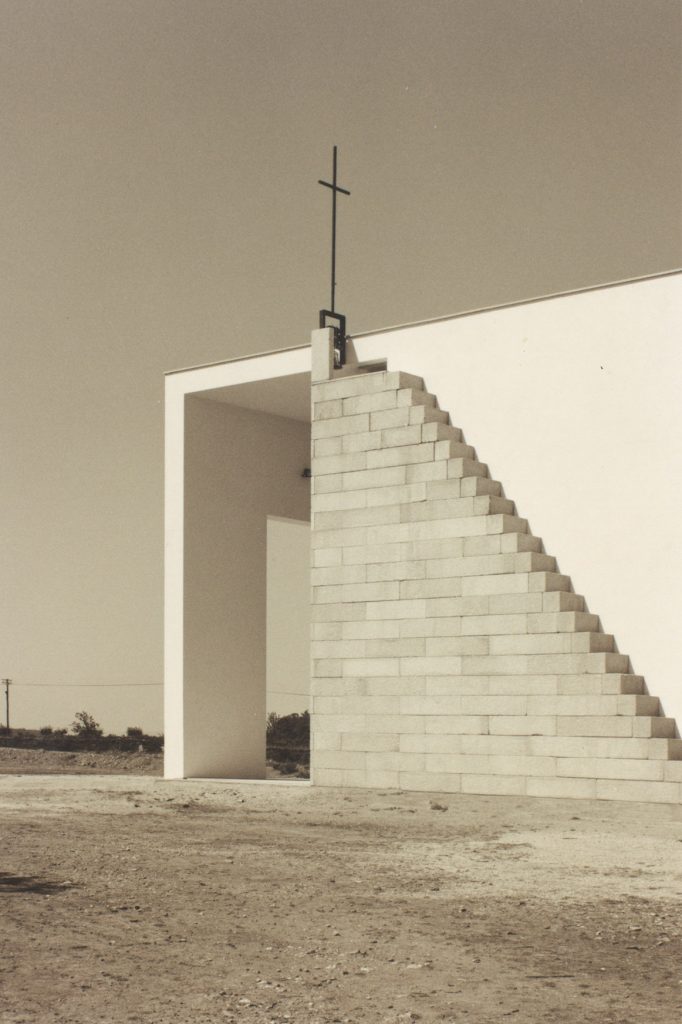
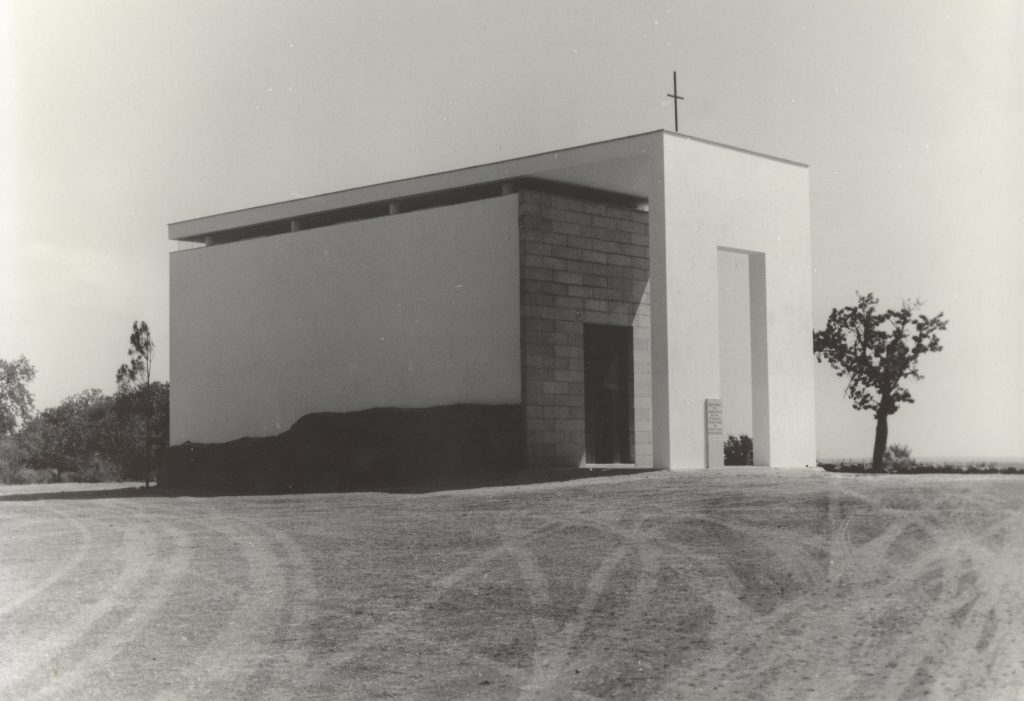
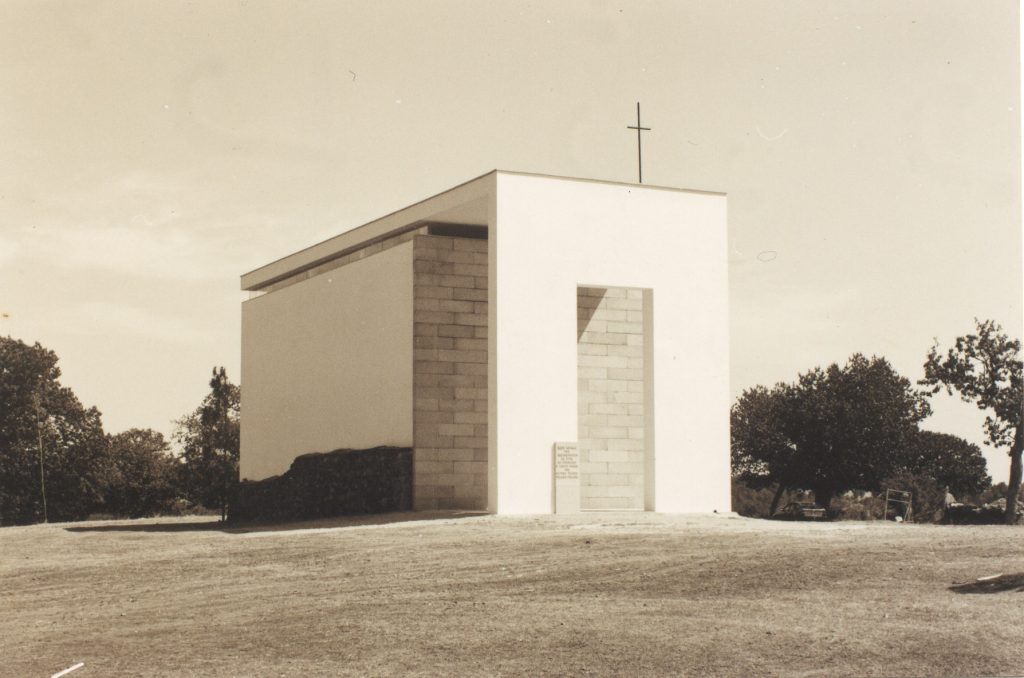
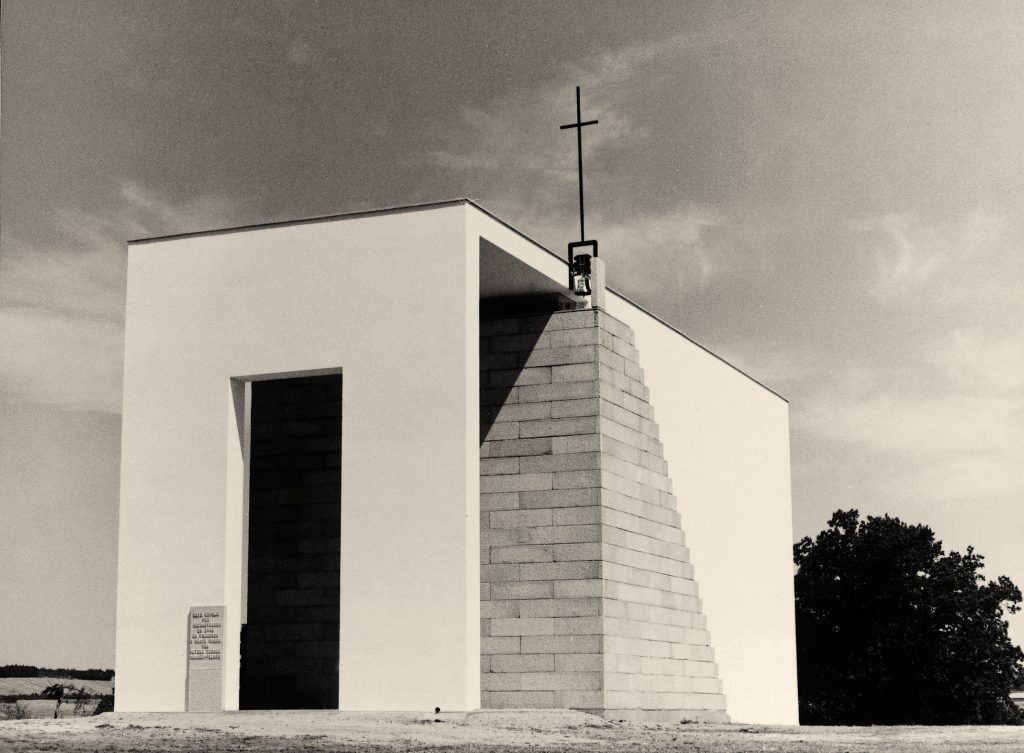
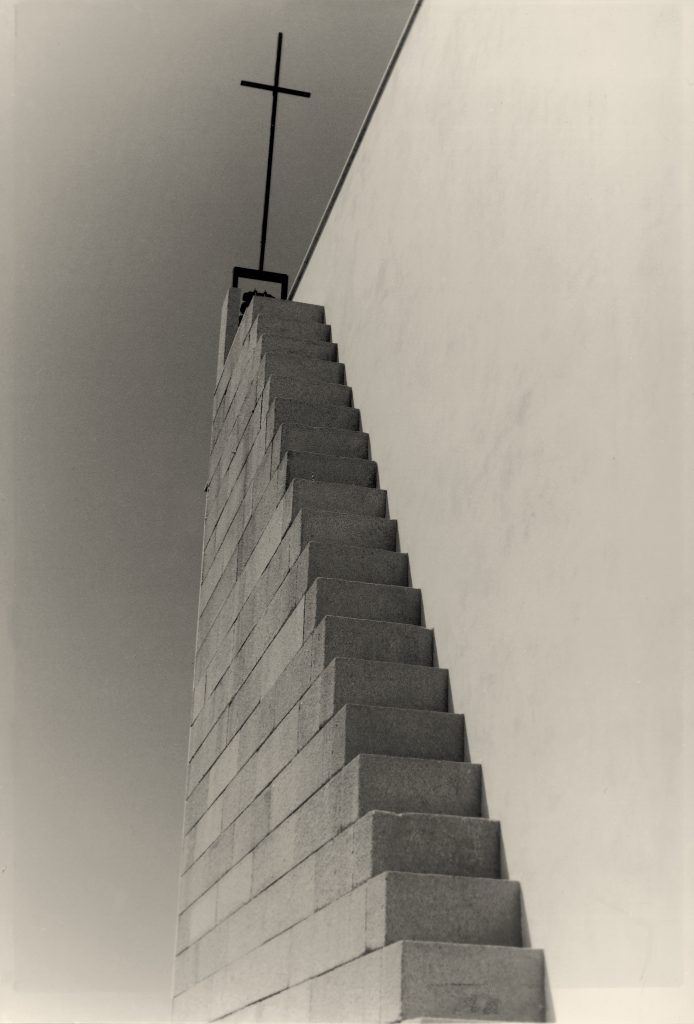
Since we set out at dawn, we have distinguished different patterns of human settlement that have been repeated along the way. Dogs come barking out of the villages to welcome strangers, as do humble buildings whose Christian symbolism announces their function. The absence of trees, probably once felled, allows for a wide clearing at the top of this bare hill. Just as the cross communicates the use of the buildings that bear it, the stone benches and the stones as benches indicate that this is a place for gathering and celebration. The sacred and the public will have coexisted here, as the backbone of this community, for generations. The insistence of a fly that has got into the car forces me to stop early at the beginning of the threshing floor, in front of the chapel.
Desde que emprendimos la marcha, rayando el alba, hemos distinguido diferentes patrones de asentamiento humano que se han repetido a lo largo del camino. Los perros salen ladrando de los pueblos para dar la bienvenida a los forasteros; como también lo hacen en ocasiones unas humildes construcciones cuya simbología cristiana anuncia su función. La ausencia de árboles, seguramente en otro tiempo talados, permite un amplio claro en lo alto de esta loma desnuda. Al igual que la cruz comunica el uso de los edificios que la portan, los bancos de piedra y las piedras como bancos señalan que éste es lugar de reunión y celebración. Lo sagrado y lo público habrán convivido aquí, como ejes vertebradores de esta comunidad, durante generaciones. La insistencia de una mosca que se ha colado en el coche me obliga a detener la marcha, anticipadamente, al inicio de la era, frente a la capilla.
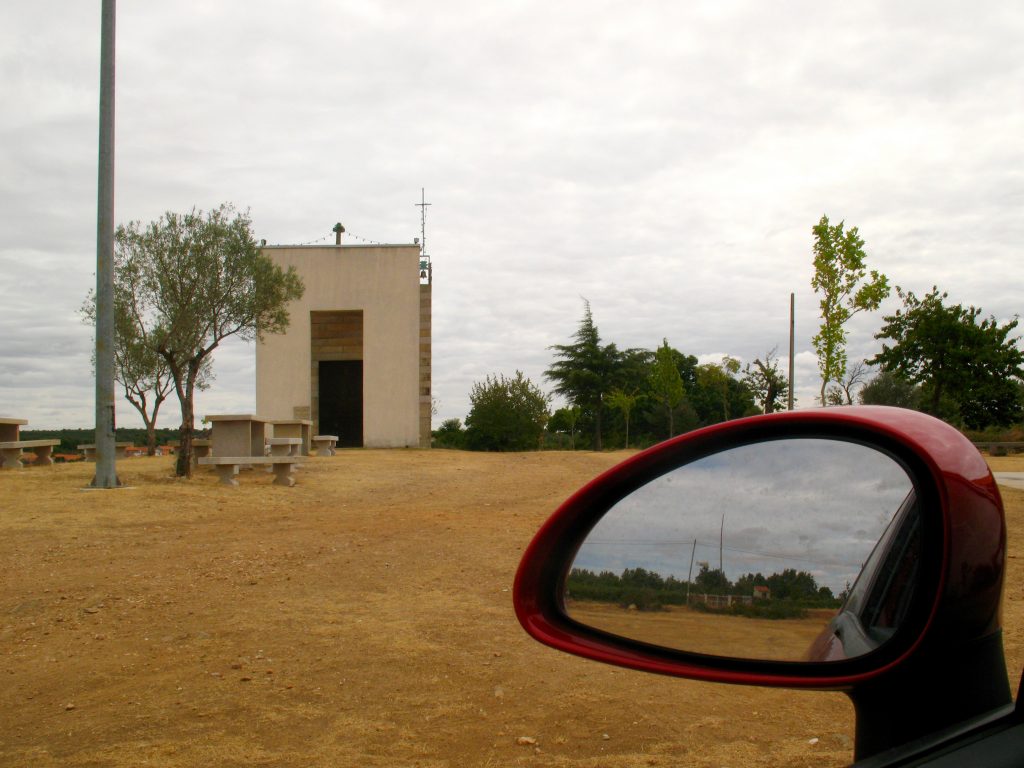
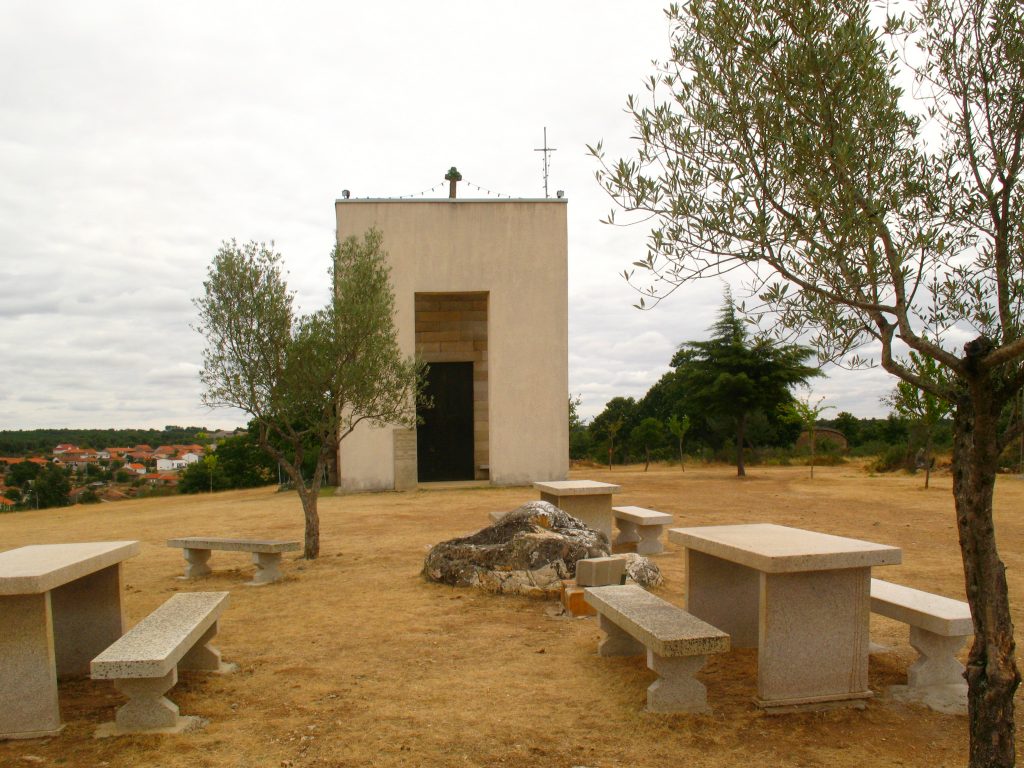
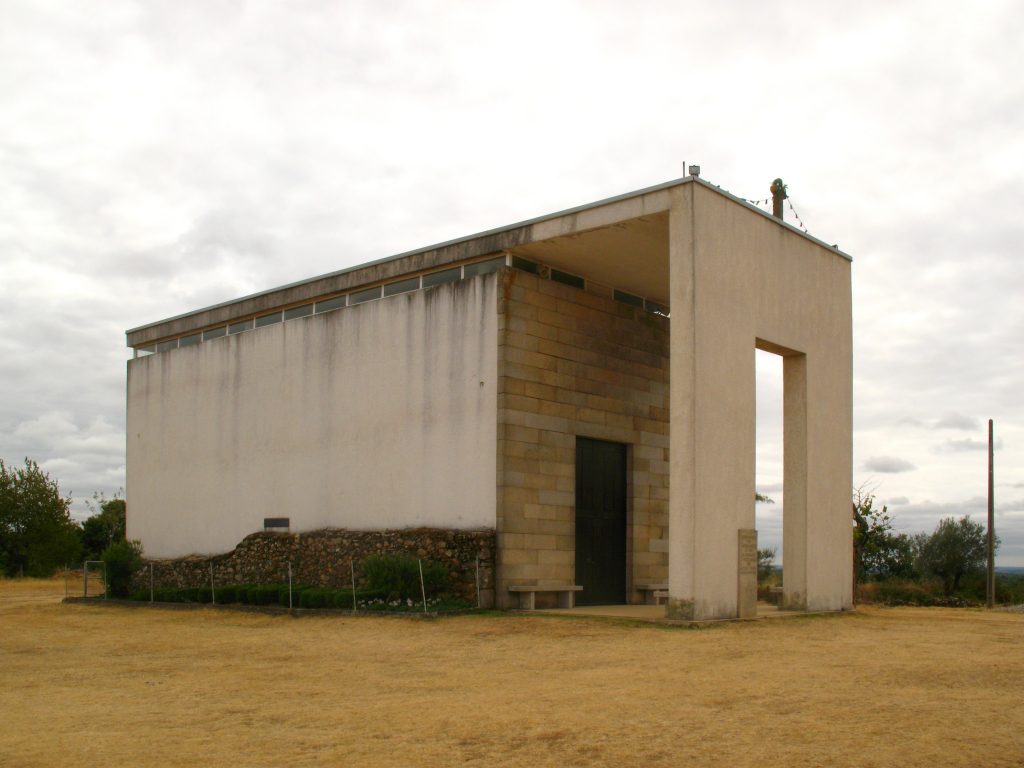
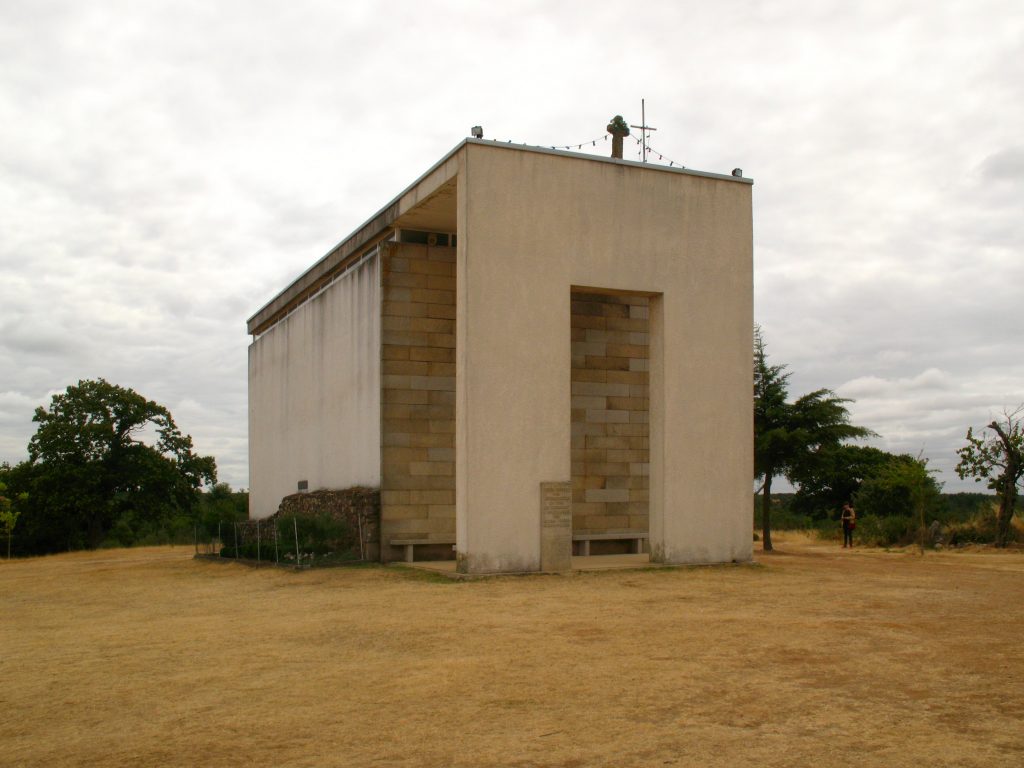
The passage of the sheep clears the soil of weeds and fertilises it at the same time. The few grasses that still cover it have a golden colour, slowly toasted by a sun that is absent today. We can distinguish the age of the people by the depth of the wrinkles, life and time folded, of their skin. Likewise, stones reveal their age with the sweetness of their edges and the darkness, organisms and humidity hosted, of their outer layer. Even from a distance, two well-defined moments in the rocks of the chapel can be clearly distinguished. A small plinth outlines at the same time, on the grass and in time, the perimeter of the building; its original foundation. I caress the dryness of its mineral forms licked by a stubborn wind. A tailless lizard slithers through the slit that two rocks draw in the imperfect lace of its habitation. As if thirsty for light, the mutilated reptile nimbly ascends to the white plaster cladding that is a vestige of a much more recent time. Well-defined edges rise above time to give body to the chapel. The easily discernible geometry provides an abstract character that speaks the language of our time; but which evokes in the composition of its spaces and its volumes the most primitive archetype of the communal meeting places in these mountains. Unaware of this dialogue between generations, the lizard meanders down the wall and loses itself in the threshing floor, crossing the entrance threshold.
El paso de las ovejas limpia de maleza y abona al mismo tiempo este suelo. Las pocas hierbas que aún lo cubren tienen un color dorado, tostado lentamente por un sol hoy ausente. Podemos distinguir la edad de las personas por la profundidad de las arrugas, vida y tiempo plegados, de su piel. Asimismo, las piedras nos desvelan su edad con la dulzura de sus aristas y la oscuridad, organismos y humedad hospedados, de su capa exterior. Incluso desde la distancia se diferencian con nitidez dos momentos bien definidos en las rocas de la capilla. Un pequeño zócalo dibuja a la vez, sobre el pasto y en el tiempo, el perímetro de la construcción; su fundación original. Acaricio la sequedad de sus formas minerales lamidas por un viento obstinado. Una lagartija sin cola se escurre por la rendija que dos rocas dibujan en el imperfecto encaje de su habitar. Como sedienta de luz, el mutilado reptil asciende ágilmente hasta el blanco revestimiento de yeso que es vestigio de un momento mucho más reciente. Aristas bien definidas se levantan sobre el tiempo para dar cuerpo a la capilla. La geometría fácilmente discernible proporciona un carácter abstracto que habla el lenguaje de nuestra época; pero que evoca en la composición de sus espacios y sus volúmenes al arquetipo más primitivo de los lugares comunitarios de reunión en estos montes. Ajena a este diálogo entre generaciones, la lagartija serpentea hasta descender del muro y perderse en la era, atravesando el umbral de entrada.


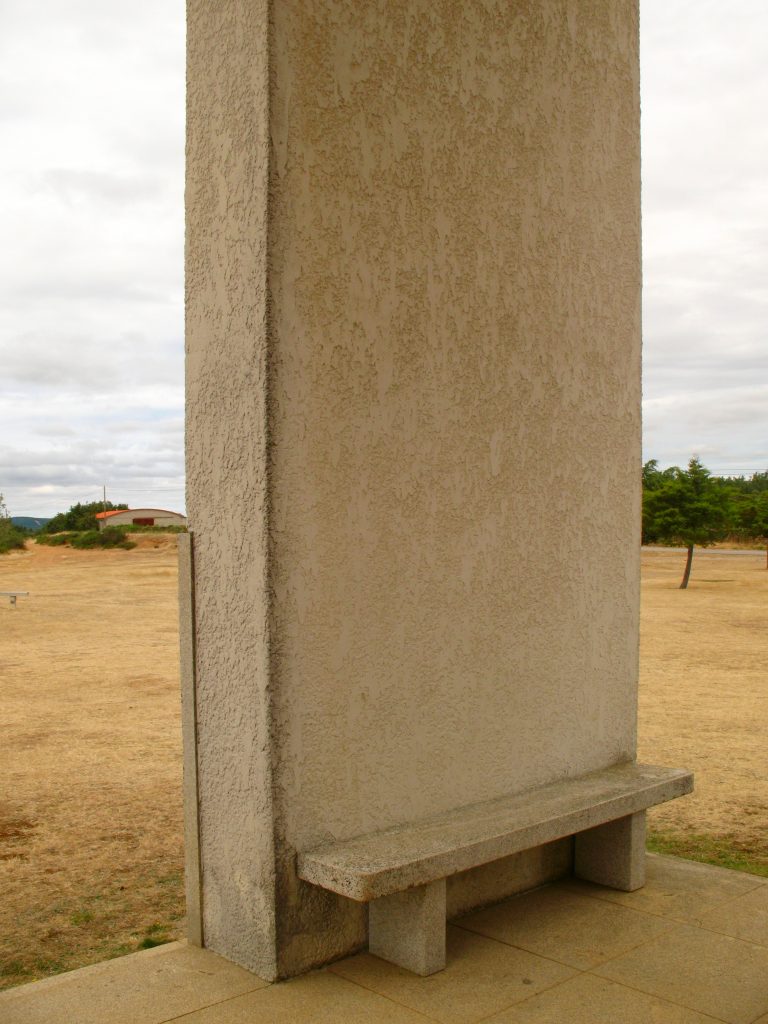
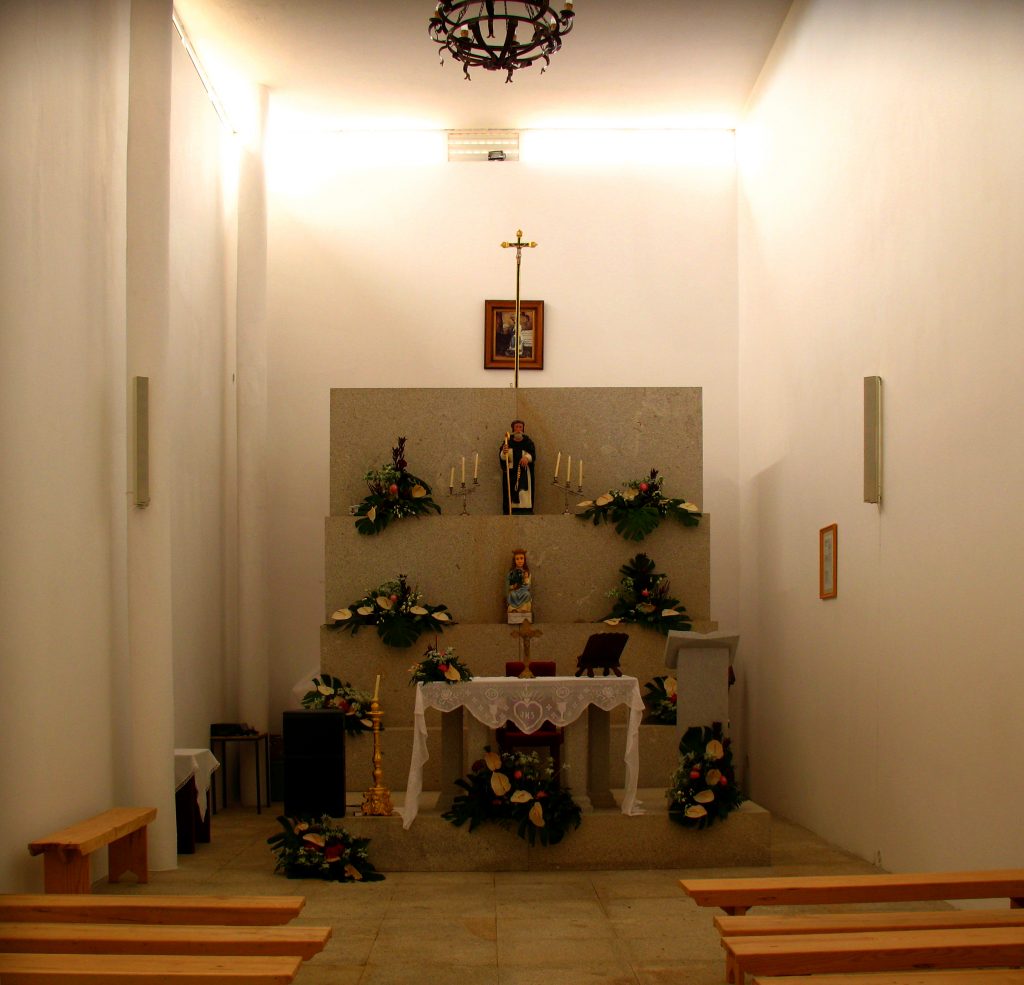
Four benches mark the vertices of the interlude that gives way to shade from light, to warmth from coolness, to the intimate from the collective or to the open territory from the more introverted interior. Sitting on one of them, the only one that timidly receives a few weak rays of sunlight for this month of August, you raise your eyes to the cover of the portico that protects us. Watch out for the wasps up there, you point to the circular dance in the air seven metres above our heads. Urged on by its uncomfortable proximity, I uneasily distance myself to the bench at the opposite vertex, from where I can calmly appreciate the beauty of its hypnotic trajectory. Now, with the sensation that this threshold seems to shelter the entire sierra in its shadow, I find myself remembering my grandfather spending the afternoon sitting on a similar bench at the entrance to his house.
Cuatro bancos marcan los vértices del interludio que da paso a la sombra desde la luz, al calor desde la frescura, a lo íntimo desde lo colectivo o al territorio abierto desde el interior más introvertido. Sentada sobre uno de ellos, el único que recibe tímidamente unos rayos de sol débiles para este mes de agosto, alzas la vista hasta la cubierta del pórtico que nos protege. Cuidado con las avispas que hay allá arriba, señalas la danza circular que se dibuja en el aire a siete metros sobre nuestra cabeza. Urgido por su incómoda cercanía, me distancio intranquilo hasta el banco del vértice opuesto, desde donde puedo apreciar con calma la belleza de su hipnótica trayectoria. Ahora, con la sensación de que este umbral parece acoger en su sombra a la sierra entera, me descubro recordando a mi abuelo pasar la tarde sentado, en un poyo similar, a la entrada de su casa.
